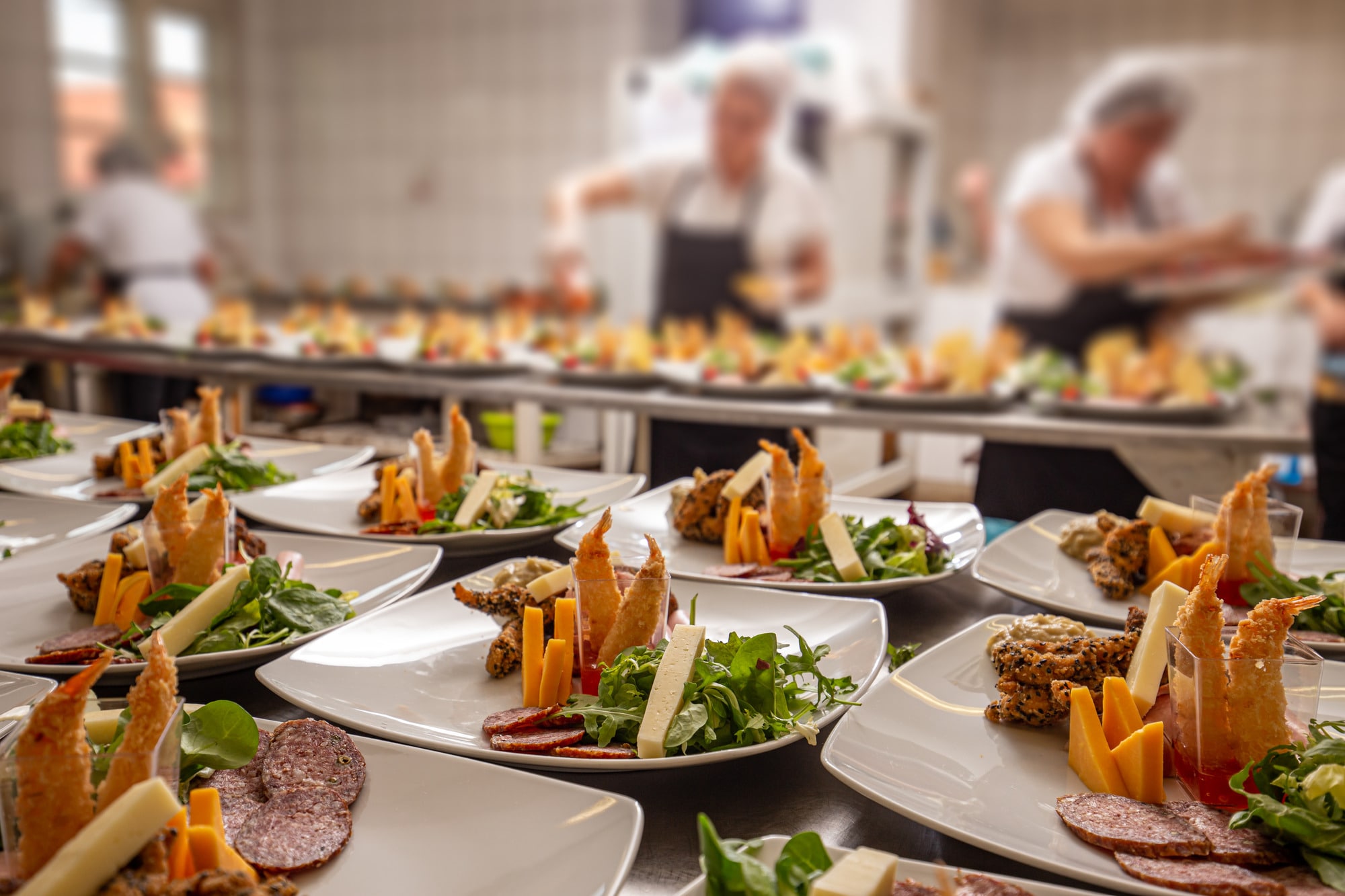
VAT Guide for Catering – Cafes, Restaurants, and Takeaways
Navigating VAT in the catering world isn’t always a piece of cake, though it would be great if it were. The rules around VAT can vary widely depending on whether you’re running a village café, a bustling restaurant or a lively takeaway. In this VAT Guide for catering, we’ll explore how VAT affects food and drink businesses, break down which items fall under standard and reduced rates and offer a few tips to help keep your accounting smooth and stress-free.
Understanding VAT Basics for the Catering Industry
VAT is a tax charged on most goods and services provided by VAT-registered businesses, and as such, restaurants and catering businesses are subject to specific rates, which can be quite nuanced in the UK. For food businesses, the VAT rate largely hinges on where and how the food and drinks are served.
In the catering world, VAT generally comes in at three rates:
- Standard rate (20%): Most items served hot, alcoholic beverages, and food served for immediate consumption.
- Reduced rate (5%): Often applied to specific hot takeaway items.
- Zero rate (0%): Most cold takeaway foods, such as sandwiches and salads, as well as basic groceries.
These distinctions can sometimes be tricky, so let’s dive into how it impact different types of catering establishments.
VAT for Cafés and Restaurants
For cafés and restaurants, the general rule of thumb is that anything served for immediate consumption is subject to VAT at the standard rate of 20%. This covers:
- Dine-in meals (hot or cold)
- Hot takeaway items
- Alcoholic beverages
One common question is what tax is applied to cold food items, such as a salad or sandwich. If a customer eats their sandwich in your café, it’s subject to the 20% standard rate, as they’re dining in. However, if the customer takes that same sandwich to go, it’s zero-rated. This is why you often find two separate rates for eating in and dining out when you pick up some grub at your local bakery.
Simple enough, but remember to stay vigilant, especially if your business offers both dine-in and takeaway options.
VAT for Takeaways
For takeaway services, VAT can get a bit muddier. The type of food and its temperature at the point of sale are key factors in determining the VAT rate. Here’s a quick breakdown:
- Hot takeaway food (e.g., a hot pizza or kebab): Typically taxed at the standard rate of 20%, unless it falls under the few exemptions where the reduced rate may apply.
- Cold takeaway food (e.g., a pre-packaged sandwich or salad): Generally zero-rated, so no VAT is charged.
- Snacks and beverages: Cold soft drinks attract the standard rate of 20%, while certain cold snacks (like crisps) may be zero-rated.
The rules around VAT for catering can be complex, but don’t fret! For those tricky cases, it’s best to review HMRC’s guidelines or get in touch with an accountant who can help you make sure you’re applying the correct rates.
VAT on Drinks
Drinks are where things can get even more complicated. Drinks are subject to varying VAT rates based on their nature and how they’re served:
- Alcoholic beverages: Always subject to the standard rate of 20%, whether served for takeaway or dine-in.
- Hot drinks (e.g., coffee, tea, hot chocolate): Standard rate of 20%.
- Cold drinks: This can vary. Bottled water is zero-rated, but soft drinks like cola or juice are usually subject to the standard rate.
This means if you’re a café serving a mix of hot lattes, iced coffees and chilled juices, you’ll need to be mindful of these distinctions to ensure accurate VAT calculations.
VAT Compliance Tips for Catering Businesses
We know VAT compliance can feel like a tall order, but the good news is that with the right approach, you can manage it effectively. Here are some quick tips:
- Keep accurate records: Track your sales carefully, noting dine-in versus takeaway and hot versus cold items. This will make a world of difference come tax time.
- Train your staff: Ensure everyone understands the VAT implications of different types of sales. A little training goes a long way in reducing mistakes.
- Use a POS system: Many modern point-of-sale systems can help by automatically categorising items at the correct VAT rate. This can save you time, reduce errors, and make record-keeping much simpler.
- Seek expert advice when needed: Don’t hesitate to reach out to an accountant for help navigating VAT. They can provide tailored advice to keep your business compliant and, importantly, help you avoid any surprise tax bills.
Consult a Professional Small Business Accountant
Understanding VAT for catering might seem daunting, but you don’t have to go it alone. From cafes to takeaways, each catering business has unique VAT challenges. That’s why having a trusted accountant by your side can make all the difference. Here at Stonehouse, our small business accountant services in Peterborough are designed to help you navigate everything from bookkeeping to VAT and tax returns.
We’ll take care of the numbers and make VAT a little less taxing, helping your business stay compliant while keeping your focus on what you do best. Get in touch today and discover how we can make your business financials a breeze.
